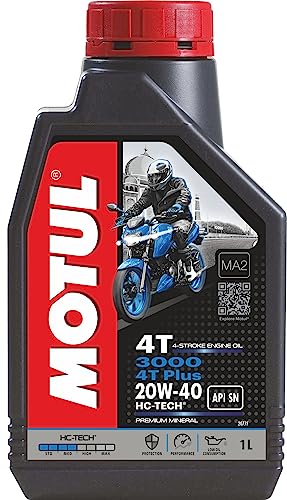If you are looking for the best engine oil for your bike, there are a few things to consider.
- The first is the type of engine oil. There are synthetic and petroleum-based oils. Synthetic oils provide better protection against wear and tear, while petroleum-based oils are less expensive.
- Another consideration is the viscosity of the oil. Viscosity is a measure of the oil’s ability to flow. Thicker oils have a higher viscosity and are better for high-performance engines, while thinner oils have a lower viscosity and are better for fuel economy.
- Finally, consider the additives in the oil. Additives can improve the performance of the oil or protect the engine from wear and tear. Some common additives include detergents, anti-wear agents, and friction modifiers.

When choosing the best engine oil for your bike, consider the type of oil, the viscosity, and the additives. Synthetic oils provide the best protection against wear and tear, while thinner oils are better for fuel economy. Additives can improve the performance of the oil or protect the engine from wear and tear.
How to choose the best engine oil for your bike?
There are a few things you need to consider when choosing the best engine oil for your bike.
If you’re a motorcycle enthusiast, you know that one of the most important things you can do to maintain your bike is to change the oil regularly. But with all the different brands and types of oil on the market, how do you choose the best engine oil for your bike?
Here are a few things to keep in mind when choosing an engine oil for your motorcycle:
1. Check your owner’s manual.
The first step in choosing the best engine oil for your motorcycle is to consult your owner’s manual. Your manual will list the specific oil requirements for your bike, so it’s important to choose an oil that meets or exceeds those specifications.
2. Consider the climate.
The climate in which you ride your motorcycle will also play a role in choosing the best engine oil. If you live in a warm climate, you’ll want to choose an oil that has a lower viscosity, or thickness. This will help your engine run cooler in the heat.
Conversely, if you live in a colder climate, you’ll want to choose an oil with a higher viscosity. This will help your engine run better in the cold weather.
3. Choose the right weight.
Just like with the viscosity, the weight of the oil you choose will also be determined by the climate in which you ride. In general, a lighter weight oil is better for warmer climates, while a heavier weight oil is better for colder climates.
4. Consider your riding style.
Your riding style is another important factor to consider when choosing engine oil. If you’re a aggressive rider who likes to push your bike to the limits, you’ll want to choose an oil that can handle the high temperatures and stress that your engine will endure.
On the other hand, if you’re a more relaxed rider who takes things easy on your bike, you can choose an oil that doesn’t need to be quite as tough.
5. Read the labels.
Once you’ve narrowed down your choices, it’s time to start reading labels. Pay attention to the additives that are listed on the label, as well as the specifications.
The labels should also list the motorcycle manufacturers that approve the oil for use in their bikes. If your bike’s manufacturer isn’t listed, it’s best to choose a different oil.
By following these tips, you’ll be sure to choose the best engine oil for your motorcycle.





![GULF Zipp 4T Smart 20W40 Motorcycle [900 Ml], Pack Of 1](https://m.media-amazon.com/images/I/41ZJlSFZFcL.jpg)






